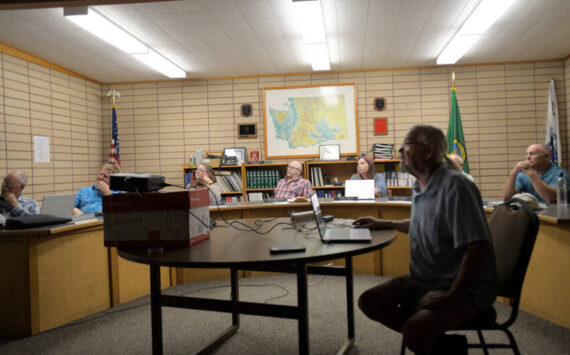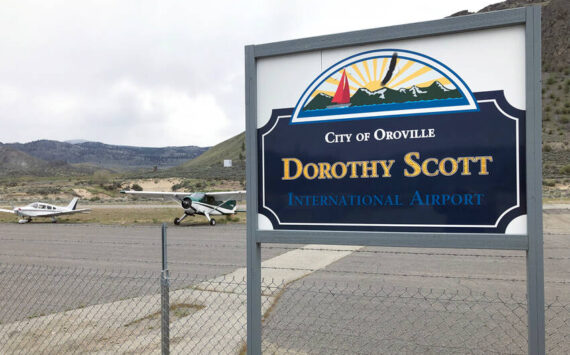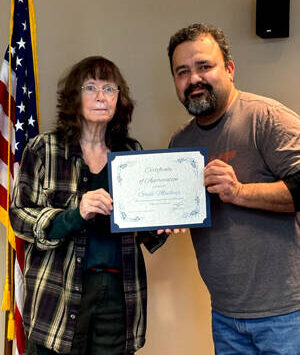TONASKET – Mike Zwicker, CEO of North Valley Hospital, presented conclusions drawn from a SWOT (Strengths, Weaknesses, Opportunities and Threats) analysis to the Board of Commissioner’s meeting January 14. The SWOT analysis was performed by members of NVH senior leadership, managers and one board member as part of NVH’s Strategic Planning and development of one-year, three-year and five-year goals.
Zwicker listed Financial Viability, Professionals/Service Culture, Community Involvement, Quality Care and Extended Care/Geriatric Services as the hospital district’s top five strengths.
Zwicker said increasing services and more being done in-house attributed to the district’s financial improvements as well as implementing strategies covered in the LEAN Six Sigma program focused on waste reduction and efficiencies.
Regarding quality care, Zwicker stressed that “Everyone in this organization touches patient care and has a part in quality care for our patients,” from nurses to housekeeping to insurance billers and everyone in between.
The hospital district’s provision of extended care and geriatric services was something Zwicker called “an outstanding service really needed in our community.”
Identified as weaknesses for NVH were a Supportive Work Environment, Waste, Communication, Trust and Infrastructure.
“We are leaning on our leaders as informational managers, and we need to value them and give them the support as needed,” said Zwicker.
Regarding waste, Zwicker said one area needing attention was “slow decision making.” Zwicker said consultants would be at the February 11 board meeting to discuss how to better implement the LEAN Six Sigma program, which uses a team effort to increase efficiency in time, inventory, motion, waiting, over production, over processing, defects and skills.
Another area of weakness identified was communication, which Zwicker pointed out has already been improved with the implementation of ‘daily huddles’ in departments throughout the organization.
“Huddle boards list a topic of the day, and issues needing to be addressed,” said Zwicker. “Daily, short quick hits of information are shared, and we have heard from staff they really appreciate these.”
Regarding trust, Zwicker said the hospital would become “more transparent with information,” and having daily huddles would improve that.
Zwicker said infrastructure listed as a weakness was due to having old equipment and parts of the building being old, and NVH leaders would need to discuss “what do we want to do with that.”
For Opportunities, Zwicker said the first one identified was Community Education. “I am looking at having senior leadership forums with the community and myself in February and March, and developing in-services for the community on wellness with topics such as weight loss and smoking cessation,” said Zwicker.
Another identified opportunity was increasing service lines by adding such things as a sleep lab, weight loss clinic and possibly a pain clinic.
The LEAN program was listed as the third opportunity. “We as an organization need to understand this is not a grant-funded process, but a commitment for process changes,” said Zwicker, adding, “We have already saved a lot of money in the last six months.”
Collaboration and Improving Infrastructure were also listed as Opportunities.
In the area of Threats, misinformation was at the top of the list.
“It’s important that not just myself, but maybe leaders and board members that go out into the community are able to hear what the community has to say, and provide accurate information in real time,” said Zwicker, using as an example the fact that Noreen Olma (Director of Ancillary Services) had renewed a bridge contract for six months with the VA Clinic.
“People have voiced concern that the VA Clinic is closing. It’s not, it’s going strong and we need to assure people of that,” said Zwicker.
Other threats listed were Mistrust; Competition; Changes in Medicare reimbursement; Less Skilled Workforce Increasing; and Low Utiliztion of Outpatient Services.
“This is what the SWOT analysis and community survey have brought to our attention so we can put together one, three and five year plans. We need to have everyone on the same team and the same page to be a strong organization,” concluded Zwicker, adding emphatically, “We WILL be the best critical access hospital in five years.”




